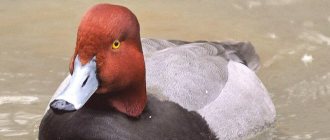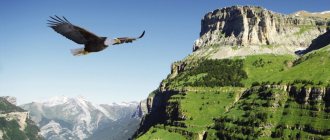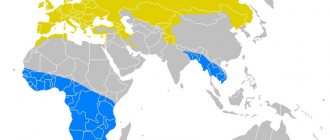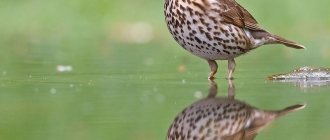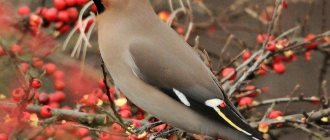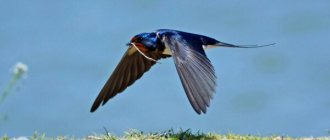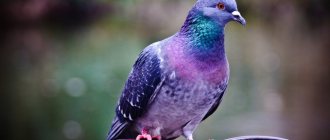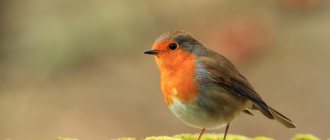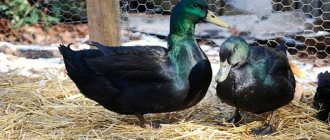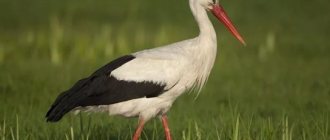The red-headed duck is a bird from the Anatidae family and the order Anseriformes. These birds are of particular interest to hunters, since the meat of dives is a real delicacy. The birds' habitat is wide, from Great Britain to the Khabarovsk Territory. Recently, ornithologists have noticed that the habitat continues to expand at the present time: red-headed pochards, usually settling in temperate latitudes, are increasingly seen in the Scandinavian countries. In total, according to rough estimates, about 300-400 thousand couples live in Europe.
External signs of the red-headed duck.
The red-headed duck has a body size of about 58 cm, a wingspan of 72 to 83 cm. Weight: from 700 to 1100 g. This species of duck is slightly smaller than the mallard, with a short tail, whose back faces upward when swimming. The body is dense with a short neck. The limbs are set far back, which is why the standing bird’s posture is strongly inclined. The beak has a narrow nail and is approximately equal to the length of the head; it widens slightly at the top. The tail has 14 tail feathers. Shoulders with slightly rounded tops. The neck and beak, which smoothly turns into the forehead, create a fairly typical profile of this duck. All plumage of the body and wings are distinguished by grayish blurry patterns.
Red-headed Pochard (Aythya ferina)
The male in breeding plumage has a brown-red head. The beak is black with a distal light gray line. The iris is red. The back near the tail is dark, the rump and undertail are black. The tail is black, glossy. The sides and back are light, ash-gray, which in daylight can appear almost whitish. The beak is bluish in color. Paws are gray. In flight, the outer gray wing feathers and light gray wing panels give the bird a "faded", rather pale appearance. The female has brownish-gray plumage on her sides and back. The head is yellowish-brown. The chest is greyish. The crown and neck are dark brownish in color. The belly is not pure white. The beak is gray-blue. The coloring of the paws is the same as that of the male. The iris of the eye is brown-red. All young birds look like the adult female, but their coloration becomes more uniform and the pale line behind the eyes is absent. The iris is yellowish.
Rod blacken
The genus blacken, in turn, is also divided into several subspecies. These ducks are distinguished by a large head, short neck, flat and wide beak.
Red-headed Pochard, or Blue Duck
Lives in Europe, northern Africa.
The red-headed duck is an excellent swimmer and diver.
In our country there is:
- in the northern regions of the European part,
- on the Kuril Islands,
- in Bashkortostan,
- in the south of Udmurtia,
- on the banks of the Yenisei, Angara, Baikal.
The red-headed duck grows to medium size, its weight rarely exceeds 1 kg.
Plumage of a drake during the mating season:
- ocher-red head with a violet sheen,
- black belly and chest,
- gray-blue back,
- bluish-gray beak.
Pairs form when returning to nesting sites. The process of courting a female is a whole ritual: the drake spins around her, lifts its head, whistles softly, and sometimes falls forward with a hoarse cough.
Nests are built in the thick of water thickets. Blue ducks do not leave the duck while the eggs are hatching, usually there are from 7 to 12 of them.
Ducklings appear after 24-26 days. After a few days, the duckling dives and feeds on its own. After 2 months, these are already fully feathered ducks, standing on their wings.
These are hardy birds that fly quickly and noisily, and dive deep and often when searching for food.
White-eyed Pochard
The identifying feature is a white iris and an almost black belly.
Meeting a white-eyed duck is a real success for a hunter
Previously, in the Russian Federation, the habitat of birds reached up to 560 N latitude, in the east it extended to the Altai Territory. Now this is Europe, the western part of Asia, Kazakhstan. They winter on the shores of the Mediterranean Sea, in the south of the Caspian Sea, and in southwest Asia.
The bird eats plant foods, its meat has an excellent taste.
The duck is characterized by its small size:
- weight – up to 800 g,
- body length – up to 42 cm,
- wing – 17-19 cm.
For nesting, the bird chooses reed thickets, dense vegetation in the middle of shallow rivers, and occasionally along the banks. Individuals gather in colonies and build nests close to each other.
There are no more than 15 eggs in the nest, which are incubated by the female. The incubation period is 24-28 days. The drake does not move far from the nest and helps in nursing the ducklings. After 55 days they are already flying.
The duck is an endangered species.
Baer's dive
This is a small duck, its weight does not exceed 400 g. A distinctive feature is a massive cranial bone.
Baer's Pochard has unusually bright plumage for a duck.
Baer's duck is widespread in a narrow area:
- banks of the Ussuri,
- Ussuro-Khanka Valley,
- The beginning of the Zeya River,
- Coastal zone of Lake Baikal.
You can see it in China and Korea. Ducks fly to India for the winter.
The drake’s “outfit” during the mating season is bright, the female is “dressed” more modestly. The courtship ritual is accompanied by flying around the duck with peculiar cries.
The Baer's Pochard is a carnivore.
Habitats of the red-headed duck.
Red-headed ducks live on lakes with deep water in open habitats with reed thickets and on open reaches. They are usually found in low-lying areas, but in Tibet they rise to a height of 2600 meters. During migration they stop at lake reaches and sea bays. They feed on ponds with abundant aquatic vegetation. Brackish lakes with scanty food are avoided. Red-headed ducks live in swamps, calm rivers, and old gravel pits with banks covered with reeds. They visit artificial reservoirs and, in particular, reservoirs.
Pink-headed duck
According to official data, she is on the verge of extinction. Presumably the remaining individuals live in the impenetrable swamps of Myanmar. The last proof of existence dates back to 1945.
They were distributed in India, Bangladesh, and northern Myanmar.
Pink-headed duck
The duck is medium in size, with a long beak and neck and an atypical head shape. The color of males is more contrasting than that of females.
Nesting sites are built in swamps and overgrown ponds in the jungle. Birds lay 6-7 spherical eggs. They feed on plants and living organisms.
Distribution of the red-headed pochard.
Red-headed pochards spread in Eurasia to Lake Baikal. The range includes Eastern, Western and Central Europe. Birds are found mainly in the southeastern regions of Russia, Central Asia, the Lower Volga region and the Caspian Sea. They live in reservoirs in the North Caucasus, Krasnodar Territory, and Transcaucasia. When flying, they stop in Siberia, the western and central regions of the European part of Russia. Red-headed ducks spend the winter in the southeastern regions of the Russian Federation, in the southern regions of Europe, North Africa, and East Asia.
Where do they live in winter?
The red-headed duck is a migratory bird, flying away the moment its reservoir runs out of food. With the onset of cold weather, lakes and swamps become covered with a crust of ice, making it difficult to obtain food. Individuals gather in small groups and go to warmer climes. They return with the first warmth in spring, when the ice on the rivers melts, the first life begins in the water, and algae begins to bloom.
Interestingly, red-headed pochards that live in warm countries also migrate to more comfortable conditions. This is due to the fact that during the hot period of the year, drought begins in southern places, which the bird simply cannot tolerate. If we talk about chicks, they begin to migrate as soon as they get stronger and fly.
Throughout the flight, the group of ducks strictly follows the leader in a certain order. Usually the route for the trip goes over places with bodies of water, where there is plenty of food for diving and you can take a break.
Peculiarities of behavior of the red-headed duck.
Red-headed pochards are gregarious birds, spending most of the year in groups. Large flocks of up to 500 birds often form in winter.
Larger groups of up to 3,000 birds are observed during the molt.
Red-headed Pochards are often found in mixed flocks with other ducks. They are not in a hurry to take to the air in case of danger, but prefer to simply dive into the water to hide from persecution. This is not surprising, since in order to rise from the surface of the water, birds need to push off strongly and actively work with their wings. However, having taken off from the reservoir, red-headed ducks quickly move away in a straight path, making a sharp noise with their wings. They swim and dive very well. The ducks' position in the water is so deep that the tail is almost half its length hidden in the water. On land, red-headed ducks move awkwardly, raising their chest high. The birds' voice is hoarse and croaking. During the molting period, red-headed pochards lose their flight feathers and cannot fly, so they wait out the unfavorable time with other pochards in remote places.
Reproduction of the red-headed pochard.
The breeding season lasts from April to June, and sometimes later in the northern distribution areas. Red-headed ducks form pairs already in migratory flocks and demonstrate mating displays, which are also observed in nesting areas. One female floating on the water is surrounded by several males. She moves in a circle, lowering her beak into the water, and croaks hoarsely. Males throw back their heads almost to their backs and open their beaks, raised at the top. At the same time, the neck swells. Then the head sharply returns back in line with the extended neck.
Mating games are accompanied by quiet whistles and hoarse sounds.
After mating, the male remains near the nest, but does not care about the offspring. The nest is located in coastal vegetation, usually in reed creases, on rafts or among coastal thickets, it is lined with duck down. Often this is just an ordinary hole in the soil, framed by a cluster of plants. The nest is shallow with a diameter of 20 - 40 cm. Some nests are built deeper, up to 36 cm, they look like floating buildings and are supported by underwater reed rhizomes. Sometimes the first eggs are laid by a duck in a wet tray or even in water. Reed, sedge, cereals are used as building materials, then a layer of dark fluff surrounding the masonry on the sides. During the absence of the female, the down is also placed on top.
Male and female
The female lays from 5 to 12 eggs. Incubation lasts 27 or 28 days. The ducklings remain with the female for 8 weeks.
Hunting
The red-headed duck is hunted more often than other species of diving ducks. The first place bird, as a trophy, is second only to the Tufted Duck. They go hunting for these birds in spring and autumn. The meat of game caught in April is considered more tasty, and by autumn the birds lose weight.
Important! Hunters who shoot birds as they fly in the spring are breaking the law!
For a good hunt you need:
- Choose the right place, i.e. perch where birds feed and rest.
- Good disguise.
- Stock up on 5-10 stuffed birds that really look like pochards in profile and color.
- Have a duck decoy and not only blow through it, but pronounce the “krrrr” that is significant for diving.
- Have good shooting skills.
It is important for any hunter to remember that shooting females in the spring is prohibited! By killing ducks during the nesting season, you destroy an entire family, which is criminal.
Diet of the red-headed duck.
Red-headed pochards feed on a wide range of foods; they eat almost everything they find in the water. However, they mainly prefer chara algae, seeds, roots, leaves and buds of aquatic plants such as duckweed, pondweed, and elodea. While diving, ducks also capture mollusks, crustaceans, worms, leeches, beetles, caddisfly larvae and chiromonids. Ducks forage for food mainly in the morning and evening. Redheads disappear underwater after a slight push and do not resurface for 13 to 16 seconds. They prefer to feed in clear water at depths between 1 and 3.50 meters, but can simply splash around in shallow water.
Male
In August, growing ducklings eat large chironomid larvae. In autumn, in brackish water bodies, red-headed ducks collect young shoots of saltwort and stalked quinoa.
If you find an error, please select a piece of text and press Ctrl+Enter.
Gogol
Habitats: swamps and rivers of tundra and forest-tundra.
On the territory of our country, the goldeneye lives in the following places:
- southern shore of Lake Baikal,
- Primorye,
- Kazakhstan.
The birds arrive at their permanent habitats in March-April. Flocks are small, approximately 10-16 individuals.
Gogol ordinary
Approximate duck parameters:
- weight – about 1 kg,
- body – 50 cm,
- wingspan – 70-75 cm.
Distinctive features are a triangular head and a short beak with a pointed tip.
Duck color:
- black, shiny feathers with a metallic tint on the head,
- white spots in the beak and eye area,
- the back, wings and tail are black, the rest of the body is white,
- there is a black stripe on the sides, and a white stripe on the wings.
The bird flies noisily and quickly.
Gogol prefers animal food, for which it dives to a depth of 11 m. During hungry periods, it can feed on seeds and roots of aquatic plants. Loves ponds with trees along the banks.
The male chooses the female he likes and creates a pair with her for many years. They organize nests in the roots or hollows of trees, among firewood or in dry grass. Couples can return to a place they like several times.
The duck lays up to 15 greenish eggs. They hatch for approximately 1 month.
